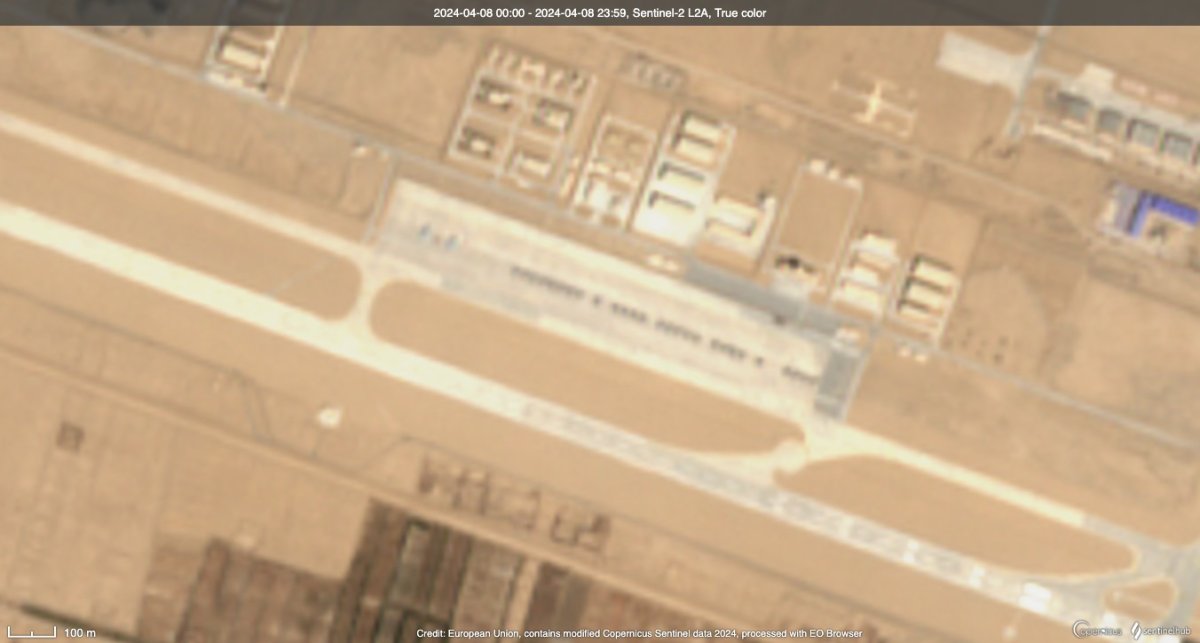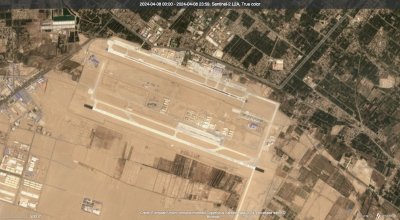A new airstrip has opened at China's strategic Hotan air base, near its contested Himalayan border with India.
Four years after construction began at the military and civilian dual-use airport in southwestern China's Xinjiang region, a second runway "now appears operational," open-source analyst Damien Symon observed on X, formerly Twitter, earlier this week.
Symon said the new infrastructure could be "pivotal in supporting China's aerial operations near Ladakh," the northwestern Indian territory where a deadly clash between Indian and Chinese soldiers in June 2020 triggered an ongoing military standoff.

New Delhi increasingly views Beijing as a strategic adversary, and any movement at the border has the potential to drive up bilateral tensions and further sour the relationship.
The two Asian giants have held 21 rounds of military-level talks to resolve the ongoing friction, which has seen both sides each deploy tens of thousands of troops to the border.
"China attaches great importance to the military-to-military relations between China and India, and hopes that India and China will meet each other halfway, enhance mutual trust, properly handle differences, and jointly maintain peace and tranquility in border areas," Col. Zhang Xiaogang, a Chinese Defense Ministry spokesperson, said in late February.
India's External Affairs Ministry said the two sides "have agreed to maintain communication on the way ahead through the relevant military and diplomatic mechanisms."
"They also committed to maintaining peace and tranquility on the ground in the border areas in the interim," New Delhi said after the latest dialogue.



Since the Galwan Valley skirmish four summers ago, China has constructed new airports and helipads near its border with India, enhancing its air power with a view to winning a potential showdown with its southern neighbor.
India, too, has been rapidly building strategic infrastructure in its northern border regions, which span 2,100 miles along what is known as the Line of Actual Control.
Hotan air base is located roughly 149 miles from the de facto India-China border.
Newsweek's analysis of the open-source imagery from the Planet-owned Sentinel Hub website shows that construction of Hotan's second airstrip began in October 2020. A large number of aircraft were visible on the runway in images captured this month.
Hotan is one of the seven strategic dual-use airports that have been upgraded since 2017, according to the China Power Project of the Center for Strategic and International Studies, a Washington think tank.
Its 2022 report found the Chinese military maintained a surface-to-air missile complex less than 3 miles from the main airport area.
Rakesh Sharma, a retired Indian army general who is now a distinguished fellow at the Vivekananda International Foundation think tank in New Delhi, told Newsweek that the new airstrip would enhance China's offensive air power against India.
"Hotan airfield off Taklamakan Desert in Xinjiang is one of the proximate airfields [to India]. The second runway is longer than the original and is about 3,700 meters [12,000 feet] long, making it much more operationally efficient and effective," Sharma said.
"The basic advantage over those in Tibet is also that it is much lower in altitude, at about 1,490 meters [4,888 feet], which will facilitate front-line aircraft like J-20 and H-6 bombers. The latter can fire even cruise missiles against ground targets," he said.
The upgrade to Hotan "elevates the air threat" the Indian territories of Ladakh as well as Jammu and Kashmir, according to Sharma.
Chinese Embassy in New Delhi and India's External Affairs Ministry did not immediately respond to Newsweek's separate written requests for comment before publication.
Uncommon Knowledge
Newsweek is committed to challenging conventional wisdom and finding connections in the search for common ground.
Newsweek is committed to challenging conventional wisdom and finding connections in the search for common ground.
About the writer
Aadil Brar is a reporter for Newsweek based in Taipei, Taiwan. He covers international security, U.S.-China relations, and East Asian ... Read more
To read how Newsweek uses AI as a newsroom tool, Click here.








